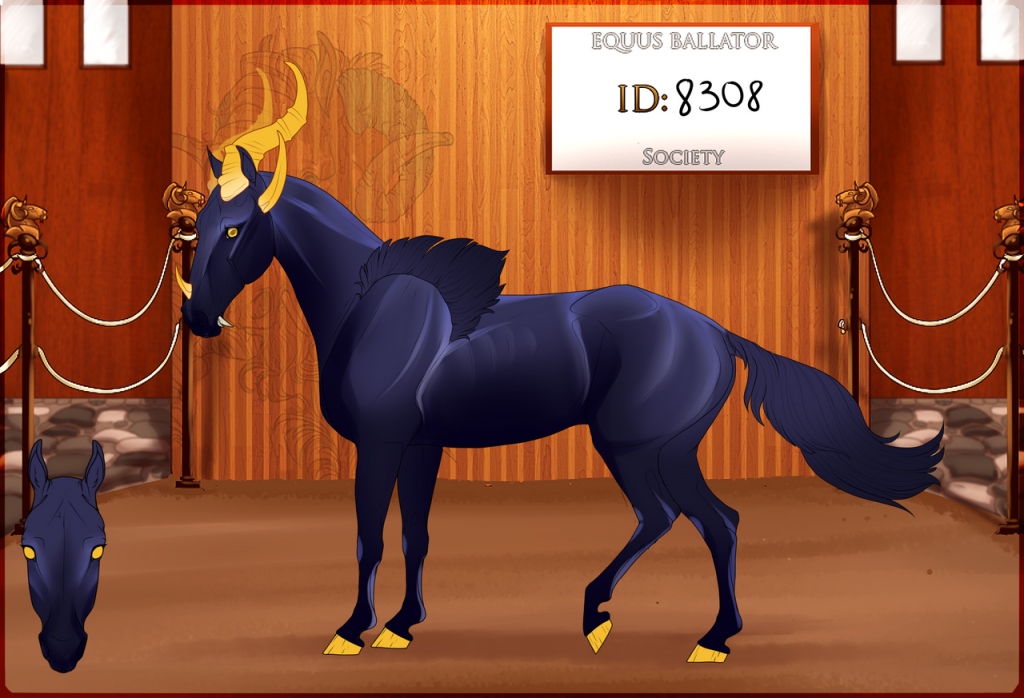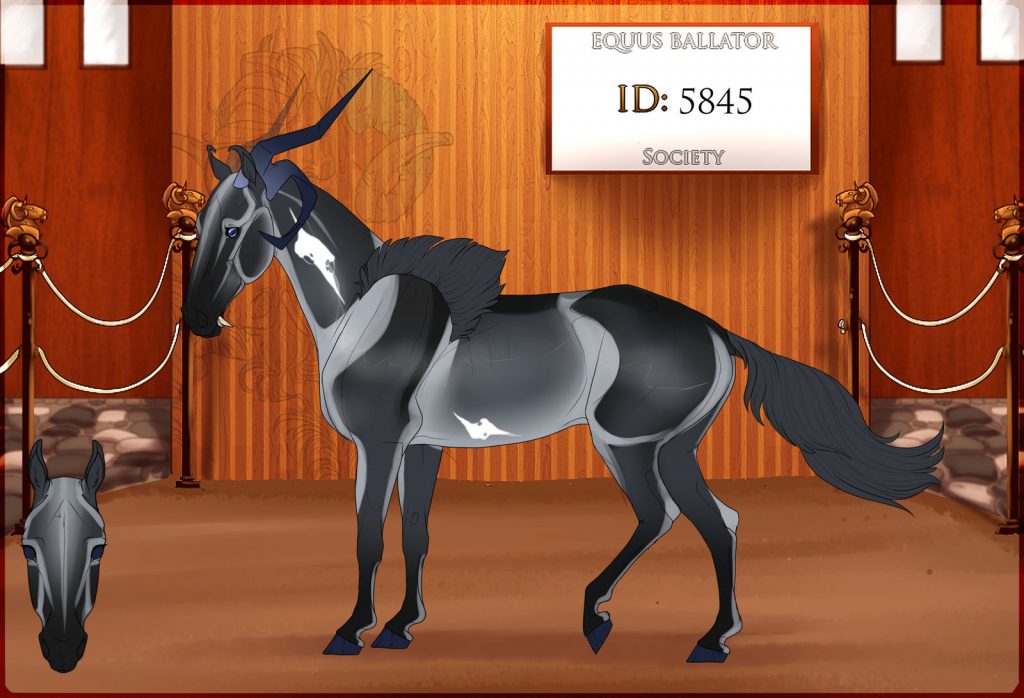Chrome
The Chrome Mutation - nCrm | CrmCrm
Chrome is a unique mutation that only effects black-based Ballators. Chrome works along the body’s “sections,” as explained further below, lining them in dark and light shading and highlights. Chrome gained its name because of the metallic sheen it causes on a Ballator’s coat, as well as the colors it can sometimes give them.
Chrome will ONLY affect black-based coats with no agouti gene (Ee/EE). Chrome is adhered to the very base coat, so all dilutions/modifiers/mutations will go on top of it.
Here are some helpful reminders when designing a Chrome Ballator:
- Light marks must interact with at least one bony area (at least 2 legs and/or the face)
- The mane is always the same color as the base coat (unless the horse is silver)
- The coat is very shiny and metallic looking, giving the coat a very glossy sheen
- There must be markings on all ‘dividing lines’ – Either partially extending up the line or fully extending.
- Chrome can extend from the spine down or the belly up, but there will always be a light and a dark mark. Dark mark may simply be a gradient.
- Chrome is always near-greyscale, unless blue champagne, cream, or mutated pearl. Never very saturated, even with these genes added.
- Chrome may not include any warm-based colors, such as yellow, red, orange, pink, etc.
Chrome's Dividing Lines & Markings
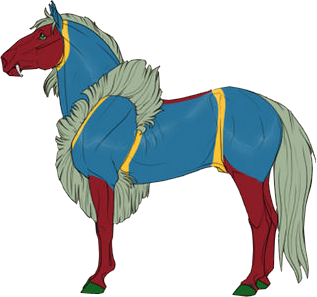 These lines show the areas where Chrome “divides” one section of the body from the other. There will always be distinct Chrome markings along these lines, either in full or partial expression length.
These lines show the areas where Chrome “divides” one section of the body from the other. There will always be distinct Chrome markings along these lines, either in full or partial expression length.
Light markings will be a few shades lighter than the base color and dark markings will be a few shades darker. Dark markings typically manifest as countershading, but can sometimes appear more crisply.
- Dividing Lines: These divide a section of the chrome from the other. Chrome markings must show on these lines either the full length or partial length (at minimum ¾). These lines are often crisp, but can have a little softness to them.
- Manes and Tail: These will always be the same color as the base coat unless the horse has the Silver gene or any other mutation that overrides and influences the mane/ tail color.
- Bony Areas: These areas are the most common for crisp, light markings to appear, though some darker markings may sometimes appear as well. Chrome will always interact with at least one Bony Area.
- Soft Areas: These are the areas where light and dark markings more easily intermingle and mix. The markings in soft areas are usually more soft edged with only the occasional crisp marking.
Chrome on a Black Base Coat
Without the addition of other dilutions, chrome cannot be saturated. It will be greyscale with very little color in the coat.
Chrome horses have extremely shiny coats with a metallic sheen.
Light and Dark markings can extend from both the belly up or spine down, but both of them cannot be ascending or descending in the same area. Minimum chrome must have marks on all dividing lines. Maximum cannot cover the whole body but can cover up to 75%.
Chrome Interactions
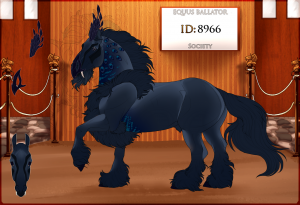
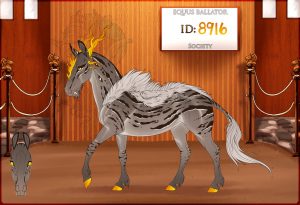
When Champagne (nCh/ ChCh) is present on a Chrome Ballator, it can be nearly identical to regular Champagne but with slightly greyer tones.
Sometimes it will also turn the Ballator a deep, midnight blue color.


Chrome with one copy of the Cream gene (nCr) creates bronze, copper, or brass colored coats. These coats will not be extremely saturated.
Chrome with two copies of the Cream gene (CrCr) causes a white gold hue that can have some hints of more creamy colors as well.

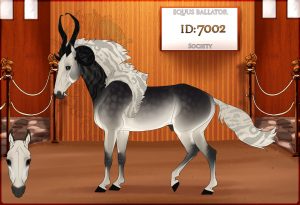
Chrome on Grullo bases can give the coat a slightly more greyish-brown appearance or it can remain more greyscale.
Typical Dun (nD/ DD) markings are all possible with Chrome.
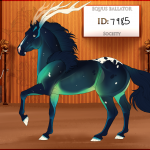
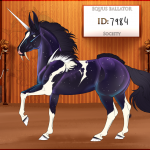

Chrome and Pearl (PrlPrl/ CrPrl) can express in a more normal color range within the bronze, gold, and copper hues or can present in a way that is hyper-pigmented.
The hyper-pigmentation can cause the Chrome markings to look like an oil spill.
Goes Above:
- None
Interacts With:
- Champagne
- Cream
- Dun
- Pearl
- Silver
Goes Below:
- Albinism
- Archetain
- Arctos
- Aves
- Calva
- Carey
- Clownfish
- Dotted Sooty
- Dusty
- Fu
- Jester
- Melanism
- Merle
- Necrosis
- Okapi Dun
- Oryx (All Types)
- Poecilia
- Reverse Roan
- Rictus
- Tuxedo
- Veneum (Retired)
- Zebroid
Can Go Above or Below:
- None
